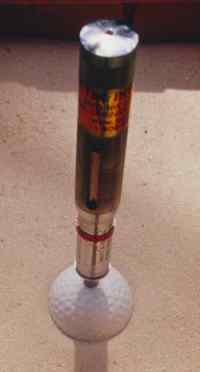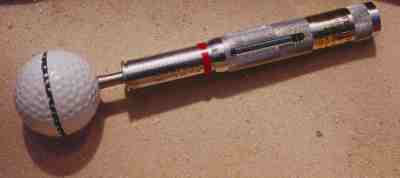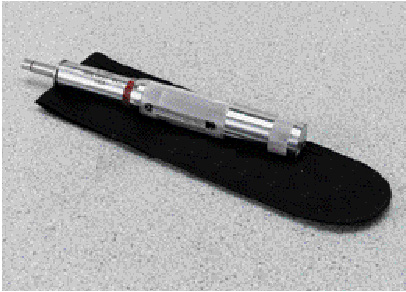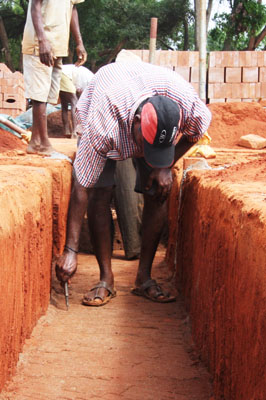
Sand Penetrometer / Pocket Penetrometer
/ Pocket Penetrometer

Simply slide the red ring down against the Sand Penetrometer instrument handle, grip the knurled portion of the handle and place the attached golf ball over the bunker sand that you will be testing. Then by pressing downward evenly on the Sand Penetrometer until the attached golf ball reaches the line located at the center, read the results.
Read the unconfined strength in Tons per Square Foot or Kilograms per Centimeter Squared. The reading is located on the lower side of the red ring - (side closest to the knurled handle).
This tool is excellent if you are re-constructing sand traps, renovating sand traps or just adding new sand to existing bunkers.


The Pocket Penetrometer unit is also required by OSHA on all excavation jobs to verify whether sidewalls require shoring in excavation trenches
Protect against costly law suits and construction delays.
The Pocket Penetrometer was originally developed for use by field personnel in checking visual classification of soils. Data was compiled on several thousand unconfined compressive strength tests of silty clays and clayey soils against the penetrometer readings to develop the scale. A close relationship exists between the penetrometer's scale reading and soil type. Spring-operated device measures strength in tons per sq. ft. or kg per sq. cm. Simply push the device's loading piston into soil to a depth of .25". A friction ring indicates maximum reading.
|
Specifications |
| Direct-reading scale in tons/sq. ft. and kg/sq. cm. |
| Ground and polished stainless steel loading piston. |
| Calibrated spring and Penetrometer body plated for rust resistance and long life. |
| Range 0.25 to 4.5 tons/sq. ft. (kg / sq.cm). |
| Scale Divisions. 0.25 tons/sq. ft. (kg / sq.cm). |
| Load Piston. 1/4" (6 mm) diam.; stainless steel. |
| Dimensions 3/4" diam. x 6-3/8" Inch (19 x 162 mm). |
| Net Weight 10oz. (283 g). |
1471 Capital Circle NW, Suite # 13
Tallahassee, FL. 32303
Order Line (800) 258-7477
Phone (850) 580-4026
Fax (850) 580-4027
Copyright 2021